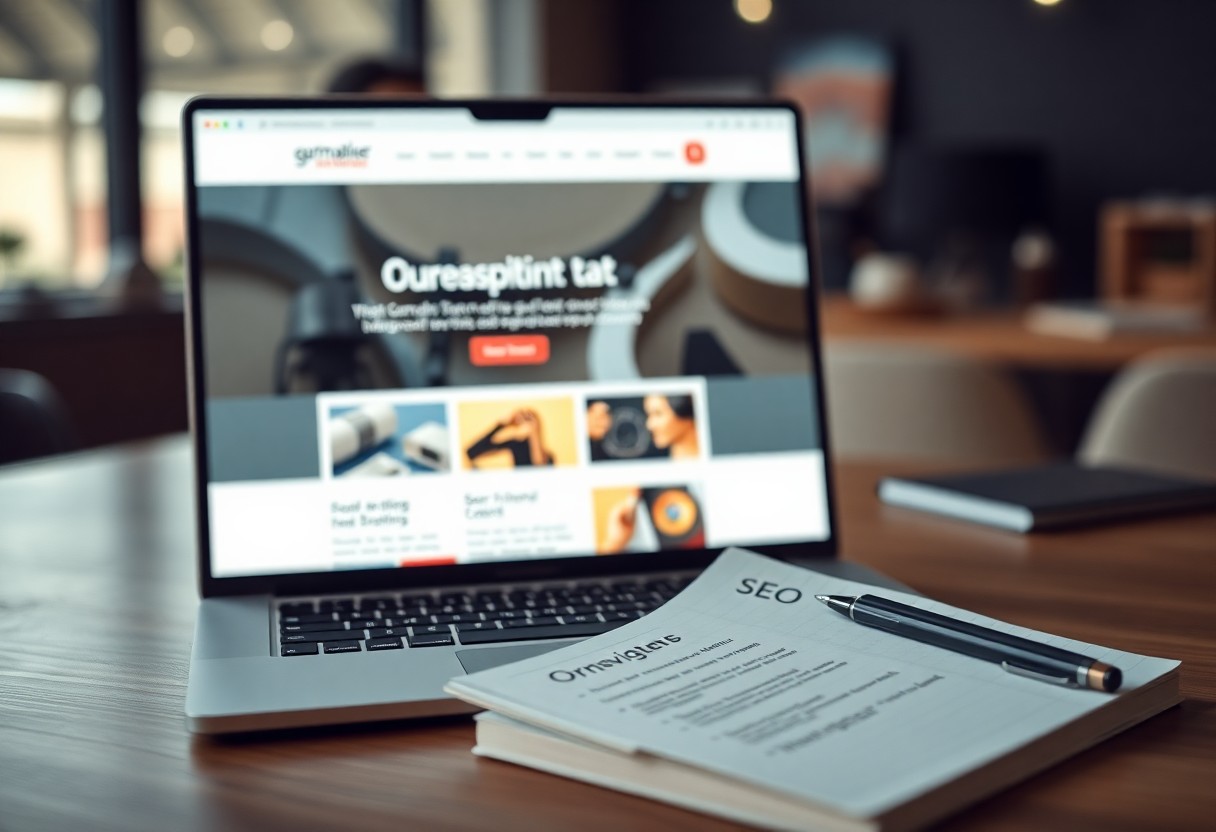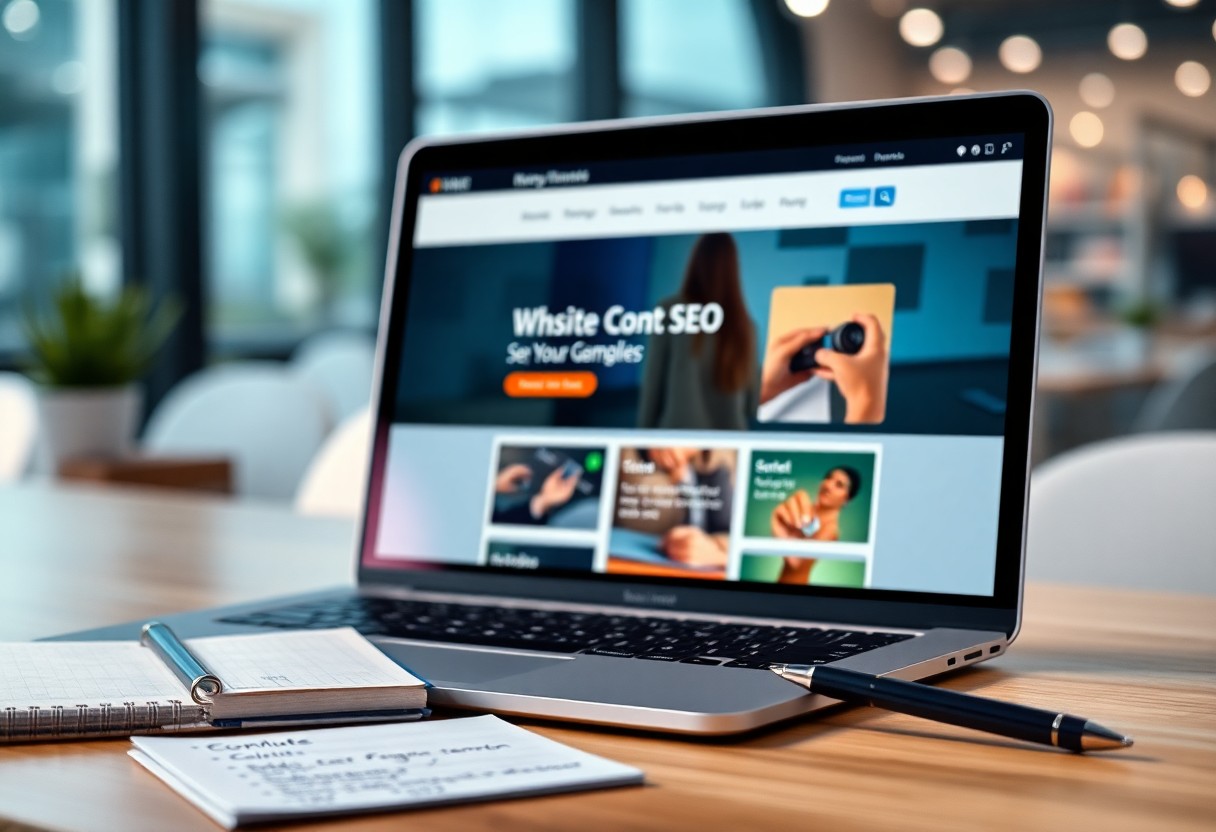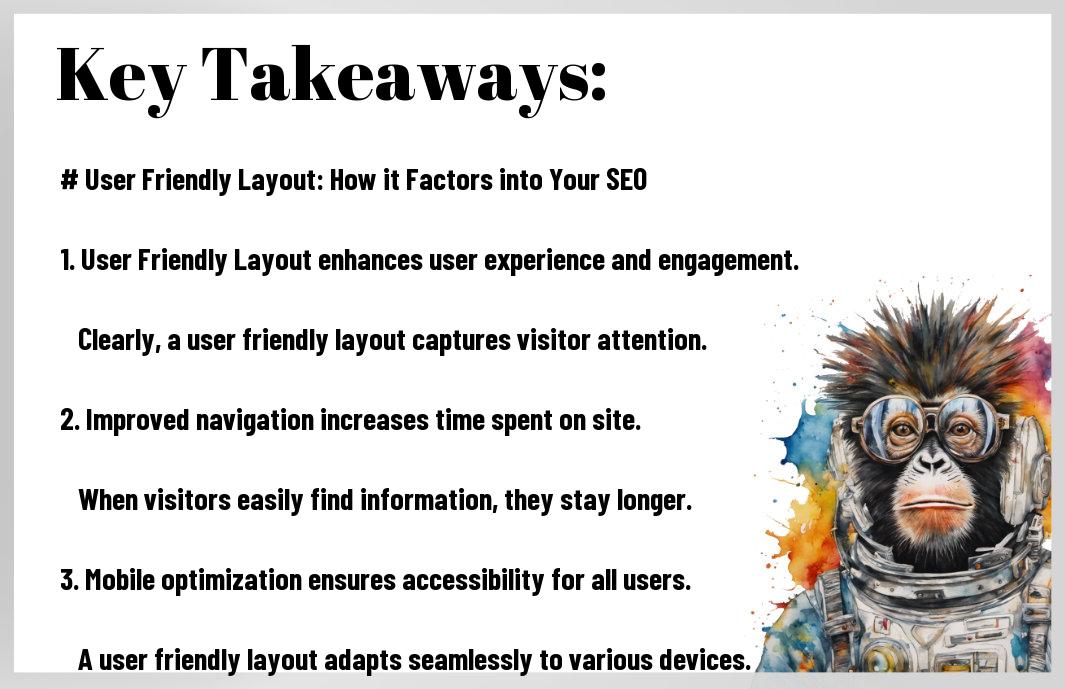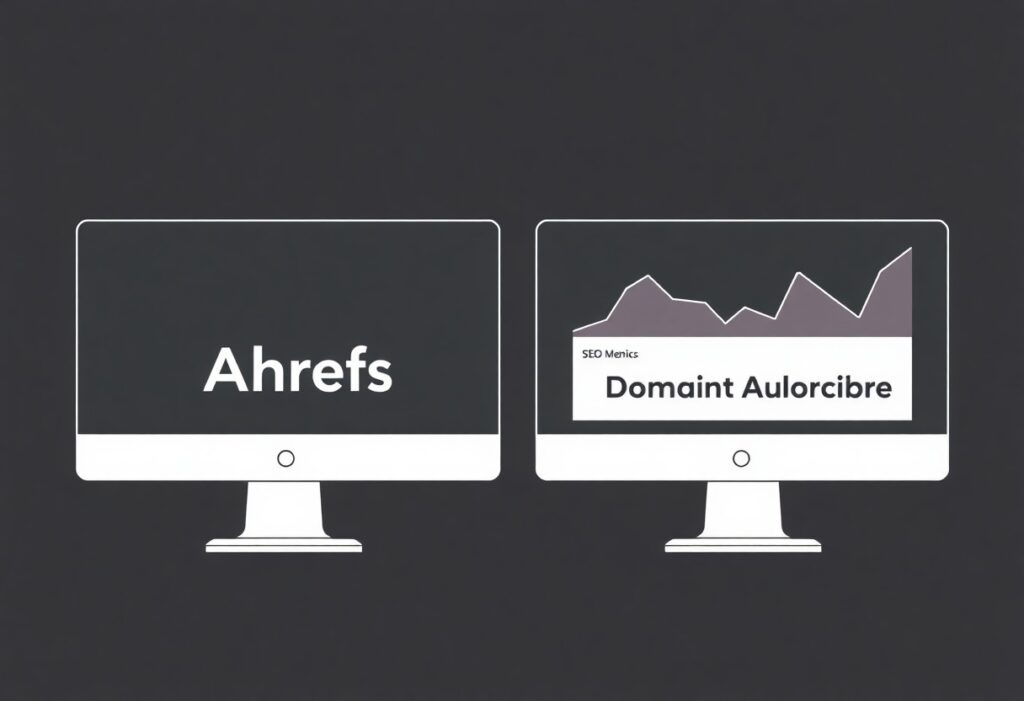With a User Friendly Layout, you can significantly enhance your website’s SEO performance. An intuitive design not only keeps visitors engaged but also helps search engines understand your content better. This means that when users navigate easily, they are more likely to stay longer on your site, reducing bounce rates and increasing your ranking potential. Additionally, optimizing your layout can improve your site’s mobile responsiveness, an important factor for search engine algorithms. Consequently, by prioritizing a User Friendly Layout, you elevate your website’s visibility and make it a powerful tool for your business at Rank Authority.
Understanding User Friendly Layout
Before you look into creating your website, it’s vital to understand the concept of a User Friendly Layout. This type of layout ensures that users can easily navigate your site, find information quickly, and ultimately engage with your content, contributing positively to your SEO efforts.
Definition and Characteristics
The User Friendly Layout refers to a design that allows for easy interaction and seamless navigation for users. Key characteristics include clear structure, intuitive navigation, and responsive design. A layout that emphasizes these traits enhances user experience and keeps visitors on your site longer.
Importance in Digital Design
Beside improving user engagement, a User Friendly Layout is fundamental to effective digital design. You’ll find that a well-organized site helps retain visitors, lowering bounce rates and encouraging repeat visits.
For instance, when your site is designed with a User Friendly Layout, it invites users to explore your content without frustration. A confusing layout can lead to higher bounce rates, which may send negative signals to search engines. Conversely, a well-structured site makes it easier for users to digest your information, increasing the likelihood they will share your content. This shared engagement further boosts your visibility. At Rank Authority, we understand that optimizing your layout not only enhances user experience but is also vital for your site’s SEO. Thus, investing time in your User Friendly Layout can yield significant benefits for your online presence.
User Experience (UX) and SEO
The User Friendly Layout of your website plays a significant role in enhancing user experience (UX) and, consequently, your SEO performance. A well-structured site keeps visitors engaged longer, improves navigability, and encourages interaction. As you optimize your layout, you foster a seamless experience, which not only enhances audience satisfaction but also signals to search engines that your site deserves a higher ranking.
The Connection Between UX and SEO
For your website to achieve its fullest potential, you must recognize the inseparable bond between UX and SEO. Search engines prioritize user satisfaction, meaning that a user-friendly design will likely correlate with higher search rankings. Additionally, better UX often leads to lower bounce rates and increased dwell times, both of which search algorithms favor.
Impact on Website Traffic
Beside improving usability, a User Friendly Layout can massively impact website traffic. When your site promotes a pleasant browsing experience, users are more likely to revisit or share your content. This organic growth can lead to an uptick in visitors and boost your brand’s online presence.
It is vital to understand that a user-friendly layout not only enhances the aesthetics of your website but also significantly influences your visitor count. By creating a layout that caters to user needs, you increase the chance of attracting new visitors. Additionally, this approach can lead to increased conversions, as satisfied users are more likely to engage with your services. On the other hand, a confusing layout can mean your potential clients leave frustrated and turn elsewhere, resulting in lost opportunities. Prioritize your UX to ensure that your efforts in SEO through Rank Authority yield the best possible outcomes.
Key Elements of a User Friendly Layout
You want your website to be effective and compelling, which starts with a User Friendly Layout. This layout is about more than aesthetics; it enhances user engagement and boosts your site’s SEO performance. Key elements include clear navigation, effective structuring, and a visually appealing design. By focusing on these aspects, you can improve visitor satisfaction, resulting in lower bounce rates and higher rankings on search engines. Let’s investigate how these elements work together to create an effective user experience.
Navigation and Structure
On your website, navigation and structure are imperative components. A clear and logical navigation system guides users seamlessly throughout your site. Incorporate intuitive menus and breadcrumbs to help users find what they need without frustration. This enhances their overall experience and keeps their engagement high. Ensure that important pages are easily accessible and that your structure reflects the priorities of your content.
Visual Design and Readability
Any successful website prioritizes visual design and readability. An engaging layout captures users’ attention and encourages them to stay longer. Use contrasting colors and ample white space to make your text easy to read. Furthermore, select legible fonts and maintain consistent styling, as this contributes to a polished appearance. A user-friendly layout not only attracts visitors but also fosters trust and credibility for your brand.
Indeed, visual design and readability significantly influence how users interact with your content. A well-designed layout utilizes elements like images, videos, and typography to create a harmonious user experience. Optimize your site for mobile devices, as an increasing number of visitors browse on their phones. Additionally, employing a responsive design ensures your site adapts to different screen sizes, enhancing usability. Focusing on these aspects contributes positively to your User Friendly Layout, ultimately improving your site’s performance and visibility in search engines, thereby solidifying your position with Rank Authority.

Mobile Responsiveness
Now, user-friendly layout encompasses mobile responsiveness, an vital component for effective SEO. With the increasing number of users accessing websites on mobile devices, ensuring your site is mobile-friendly directly affects your rankings on search engines. Responsive design allows your content to adapt seamlessly across a variety of screen sizes, enhancing the overall user experience. Consequently, this can lead to longer visit durations and lower bounce rates, both of which positively influence your SEO efforts.
Importance in Today’s Digital Landscape
An effective user-friendly layout must include mobile responsiveness, particularly given the rise of mobile internet usage. In today’s digital landscape, more than half of web traffic comes from mobile devices. As a result, search engines like Google prioritize mobile-optimized content. Your users expect a smooth, intuitive experience, regardless of the device they use. Hence, failing to cater to mobile users could result in lost opportunities and diminished visibility.
Mobile Optimization Techniques
Below are several mobile optimization techniques that can significantly improve your user-friendly layout. Start by employing responsive web design, which ensures your site adjusts to any screen size. Implement fast-loading images and minimize redirects, as these factors enhance speed and performance. Also, prioritize easy navigation with large buttons and simplified menus, enabling users to find what they need effortlessly. Lastly, ensure your content is legible, using appropriate font sizes that enhance readability on smaller displays.
And while these mobile optimization techniques seem straightforward, they can significantly impact your SEO outcomes when executed properly. Responsive design provides an optimal viewing experience, fast-loading images can keep users engaged, and easy navigation reduces the chances of users abandoning your site. This all contributes to a stronger user-friendly layout that ultimately pushes your site higher in search results, ensuring Rank Authority helps you achieve better visibility in a competitive online environment.

Common Pitfalls to Avoid
Once again, a well-crafted User Friendly Layout can significantly affect your SEO strategy. However, there are common pitfalls that can undermine your efforts. Failing to address these issues can result in lost traffic and diminished engagement. Awareness of these pitfalls allows you to make informed decisions and optimize your website effectively. Let’s research into the key issues that may compromise your layout.
Cluttered Layouts
Among the most common mistakes is a cluttered layout that overwhelms visitors. Your website should facilitate an intuitive browsing experience. If users struggle to find information quickly, they are likely to exit your site, increasing your bounce rate. Aim for simplicity and clarity to keep your audience engaged.
Slow Loading Times
Behind a poor User Friendly Layout often lies the issue of slow loading times. When your pages take too long to load, potential customers may abandon your site. This scenario not only frustrates users but also impacts your search engine ranking negatively. A fast, responsive design is important for retaining visitors.
Consequently, slow loading times can severely hinder your User Friendly Layout. If your website takes more than three seconds to load, visitors may feel discouraged and leave. This abandonment harms your SEO efforts, as search engines prioritize user experience. Additionally, factors like unoptimized images and excessive plugins contribute to these delays. It’s vital to regularly check your site’s performance and amend any elements that could slow it down. By ensuring quick load times, your users will enjoy a seamless experience, keeping them engaged with your content and helping you rank higher on search engines. Trust Rank Authority to guide you in optimizing your layout effectively.

Measuring the Effectiveness of Your Layout
All businesses striving for a successful online presence should prioritize a User Friendly Layout. To gauge the effectiveness of your layout, you’ll need to apply the right assessment strategies. It’s vital not just to build an appealing design but also to ensure it fosters engagement and improves your SEO rankings. By regularly measuring and analyzing user interaction, you can fine-tune your layout for better performance and greater user satisfaction.
Tools and Metrics for Assessment
Before exploring into improving your User Friendly Layout, utilize various analytical tools. Google Analytics, heatmaps, and user surveys are excellent starting points for understanding how visitors interact with your site. These tools provide valuable insights into bounce rates, session durations, and user flows, helping you identify areas that need improvement.
Analyzing User Behavior
User behavior analysis plays a significant role in optimizing your User Friendly Layout. By observing how users navigate your site, you can pinpoint bottlenecks and content that resonates well. This evaluation allows you to make informed decisions that enhance user experience and SEO effectiveness.
The primary goal of analyzing user behavior is to uncover valuable insights into how visitors engage with your layout. For instance, if users frequently abandon your site at a specific point, it may indicate a challenging navigation experience or unclear calls to action. Additionally, tracking click patterns can reveal which elements attract the most attention and encourage interaction. Use this data to refine your layout, ensuring it’s intuitive and meets user expectations. Ultimately, a tailored User Friendly Layout can significantly improve your SEO outcomes and establish your online presence. By leveraging tools and understanding user behavior, you ensure that your site adheres to the best practices outlined by Rank Authority.

Final Words
Drawing together the vital components of a User Friendly Layout, you enhance not only your website’s usability but also its SEO performance. A clean, intuitive design allows your visitors to navigate easily, thereby reducing bounce rates and increasing engagement. Subsequently, these factors contribute positively to your search engine rankings. At Rank Authority, incorporating a User Friendly Layout in your strategy can significantly impact your visibility online. By prioritizing user experience, you will ultimately improve both customer satisfaction and your position on search results. Therefore, your focus on a user-centric design will pay off in the long run.













